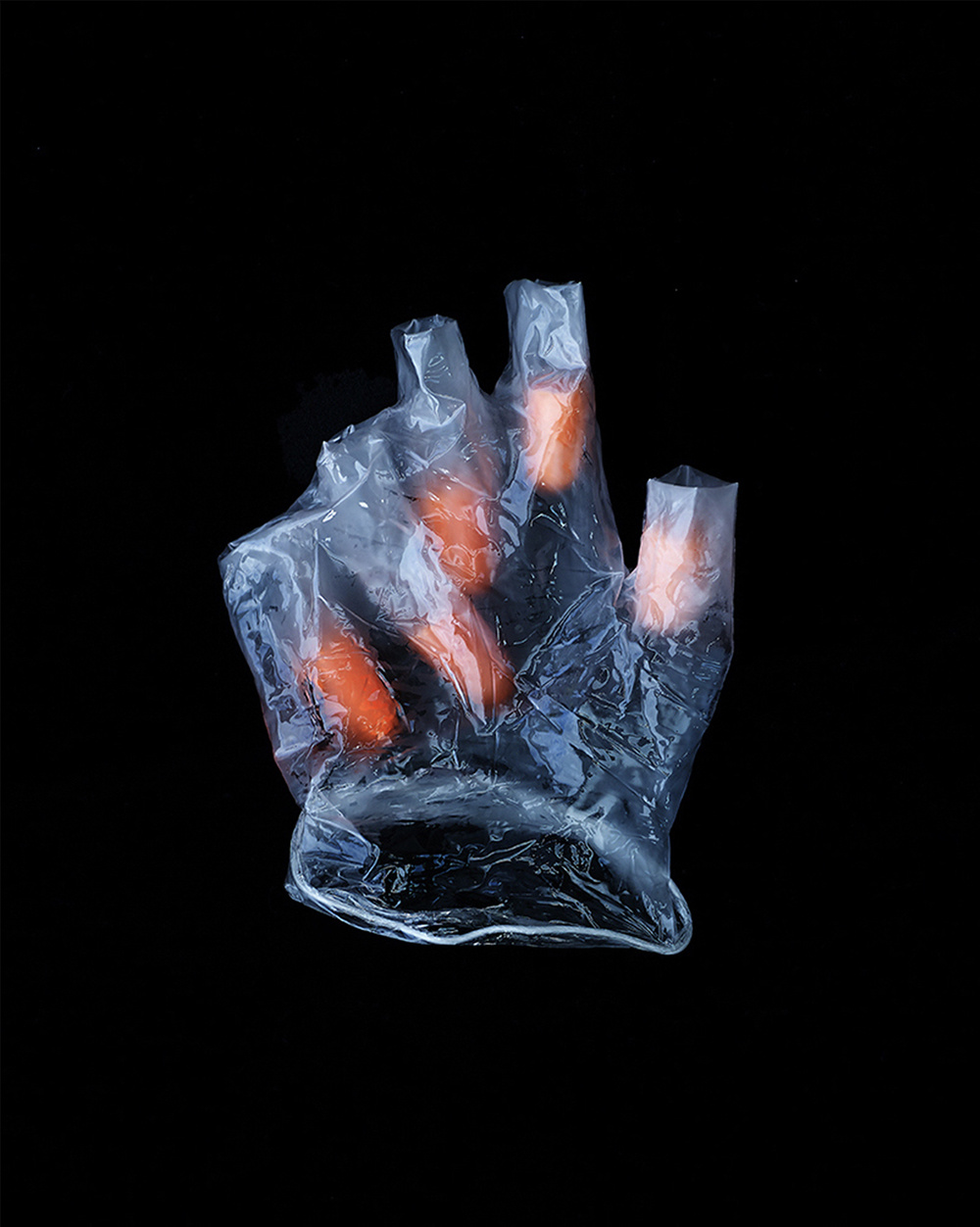Exhibition blurb, Divergent: New Photography Aotearoa, The Renshaws, Brisbane, 2022.
_
When the Renshaws asked if I could curate a show from Aotearoa New Zealand, I instantly thought of three emerging photographers, each of whom is putting their own spin on our identity-politics, melting-pot moment: Cao Xun, Telly Tuita, and Tia Ranginui.
When I first saw Cao Xun’s work, I felt like I’d stumbled on a niche pornography site. His photos are full of fun and games, with male bodies pursuing their pleasure. The images range from casual-looking documentary shots to slick-looking advertising-style ones. Bodies are wrapped in second-skin clothing (pantyhose and spandex) and engage fetishistically with utilitarian objects (a cellphone earpiece, a bike seat, packing tape, a plastic funnel). Much of the activity is solitary, but, where there is coupling, bodies are entangled, so we can’t easily see where they begin and end. As a charged cocktail of tactility and intimacy, Cao Xun’s photos place us on a knife edge of attraction and repulsion. They can also involve leaps of logic. Take Hand Plugs (2022), a product shot of a transparent plastic glove, its fingers occupied by orange ear plugs. It seems to make an analogy between those plugs and the fingers we might also shove in our ears (not wanting to hear). Meanwhile, the glove itself suggests both our need for contact and our fear of it. Cao Xun’s project may be rooted in an interest in the discomfort, awkwardness, and shame linked to the queer body and its failure to meet heteronormative expectations, yet it has a defiant, playful, witty edge.
Telly Tuita is doubly displaced. He left Tonga as a young boy, to live with his father in Australia. Later, as an adult, he relocated to wet, windy Wellington, to live with his Māori husband. In his photographs, Tuita is enthroned before his painted faux-tapa backdrops, posing with props that await our interpretation. His campy, theatrical tableaux vivant recall colonial-period photographs of exotic ‘big chief’ types. Tuita calls his work ‘TongPop Nostalgia’, admitting he’s indulging a childhood fantasy of an idyllic homeland. He is one of the New Zealand–based Pasifika artists curator Leafa Wilson has called ‘cold islanders’. They relate to Māori, yet have tauiwi status; they are ‘cold’: away from the warmth of the islands literally and left out in the cold metaphorically. In his photos here, Tuita links the four horsemen of the apocalypse from the Book of Revelation (Famine, Conquest, War, and Death) with the four seasons (autumn, winter, spring, summer). He dons costumes and elaborate headdresses. In War in Spring, he wears footy shorts and is draped in diaphanous pink tulle, queering the iconic look of Aussie yobs wearing Australian flags.
When she was a child, Tia Ranginui (Ngāti Hine Oneone) heard about patupaiarehe from her grandfather. In Māori lore, they were the first people of Aotearoa. They were nocturnal, lived in the mountains and forests, and built their homes from swirling mists. They had pale skin and red or fair hair, and bewitched people—especially young women—luring them away. Redhead and albino Māori were sometimes said to be the result of coupling with patupaiarehe. But should these stories be taken literally? And are patupaiarehe ‘people’ or supernatural beings—‘fairies’? Certainly, some Pakeha have taken these tales as literal evidence that early Europeans arrived here before Polynesians. Ranginui dismisses such theories, for ‘exploiting our stories, against us’. In her photograph series Tua o Tāwauwau/Away with the Fairies (2020–2), she adds her own spin to these tales and their interpretation. In her images, patupaiarehe are now ‘red-headed cool kids’, out and about in the Whanganui suburbs where she lives—in full daylight, hiding in plain sight—indulging their slacker-teenager ennui. They still conjure the mist, only now it’s supplied by smoke machines and vapes. Some of her titles are te reo Māori, others refer to Norse myth—a cheeky nod to those conspiracy theorists (and an acknowledgement of her own Norse side). For instance, Niflheim refers to the dark, misty world of the dead, ruled by the goddess Hel, while Sleipnir—showing a patupaiarehe on the prowl in his Mustang car—was Odin’s legendary eight-legged horse. Observing rather than explaining, Ranginui plays on the way Māori themselves encountered patupaiarehe as an unknowable other.
[IMAGE: Cao Xun Hand Plugs 2022]
